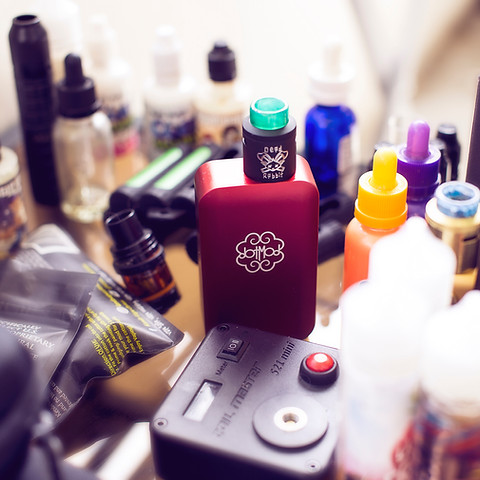
IOWA
Analysis, Commentary, Musings
IOWA
Analysis, Commentary, Musings

FLORIDA
FLAVOR BAN WOULD VAPORIZE TOBACCO HARM REDUCTION, ELIMINATE SMALL BUSINESSES IN THE SUNSHINE STATE
May 1, 2020

KEY POINTS:
-
Senate Bill 810 would require permits for persons or corporations, enact a retail fee for the sale of vapor products, and would prohibit persons “from selling, delivering, bartering, furnishing, or giving flavored liquid nicotine products to any other person.”
-
Smoking-related health issues costs Florida $8.64 billion in annual health care costs, including $1.51 billion in Medicaid costs. According to the Florida Health, 28,600 Floridians die annually from smoking-related illnesses.
-
Vapor products have helped an estimated three million smokers quit combustible cigarettes and are twice as effective in helping smokers quit.
-
According to numerous public health organizations, vapor products are significantly less harmful than smoking, with Public Health England noting that e-cigarettes are "95% safer than smoking."
-
E-cigarettes and vapor products have also been an economic boon to the Sunshine State.
-
In 2018, the vapor industry’s total economic impact to Florida was over $1.4 billion, including more than $82 million in state taxes.
-
In the same year, the industry created 5,353 direct vaping-related jobs, which generated $198 million in wages.
-
-
There is no evidence flavor bans will reduce youth e-cigarette use.
-
Santa Clara County, California banned flavored tobacco products to age restricted stores in 2014.
-
Youth use of e-cigarettes increased after the ban went into effect. For example, in 2015-16, 7.5 percent of Santa Clara high school students reported current use of e-cigarettes. In 2017-18, this increased to 10.7 percent.
-
-
There is no evidence that youth use e-cigarettes products solely due to flavors. In analysis of five state surveys on youth e-cigarette use, only 15.6 percent of high school students cited using e-cigarettes because of flavors.
-
Florida dedicates very little in existing tobacco moneys on programs that can help Floridians quit.
-
In 2019, Florida received an estimated $1.5347 billion in revenue generated by tobacco settlement payments and tobacco taxes.
-
In the same year, the Sunshine State dedicated only $70.4 million of state funds, or less than one percent of tobacco moneys, on tobacco control and prevention programs.
-

TOBACCO HARM REDUCTION 101: FLORIDA
January 14, 2020
Key Points:
-
Florida’s vaping industry provided more than $1.5 billion in economic activity in 2018 while generating 5,353 direct vaping-related jobs. Sales of disposables and prefilled cartridges in Florida exceeded $41.7 million in 2016.
-
As of January 7, 2020, FDH has reported 110 cases of vaping-related lung illness, including two deaths. FDH does not provide information on age, gender, and substances vaped. FDH earns an F for its lack of transparency on vaping-related lung illnesses.
-
In 2019, 25.6 percent of Florida high school students reported using vapor products on at least one day in the previous 30 days. There is no information on frequent and/or daily e-cigarette use. More data is needed.
-
Only 3 percent of FDA retail compliance checks in Florida resulted in sales of e-cigarettes to minors from January 1, 2018 to September 30, 2019.
-
Florida spends very little on tobacco prevention. In 2019, Florida dedicated only $70.4 million on tobacco control, or 4 percent of what the state received in tobacco settlement payments and taxes.
FLORIDA LEGISLATION DEFINES E-CIGARETTES AS TOBACCO PRODUCTS, WOULD RESTRICT ACCESS
March 25, 2019
-
Senate Bill 1046 would broaden Florida’s definition of “tobacco products” to include e-cigarettes as well as other recreational nicotine products, such as smokeless tobacco and hookahs. The bill would also ban retail sales of tobacco products that have a flavor “other than tobacco, menthol, or mint” to age-restricted stores.
-
House Bill 1125 is a companion bill to SB 1046. It includes an amendment that removes the retail flavor ban provision.
-
A vaping device is a tobacco harm reduction product medical experts have verified is thoroughly safer than tobacco cigarettes.
-
Public Health England (PHE) declared in 2015 e-cigarettes to be 95 percent safer than smoking.
-
In 2018, after reexamining the evidence, PHE “reiterated its claim that vaping is at least 95% safer than smoking.”
-
The agency is also responsible for the “Stoptober” campaign, urging smokers to quit tobacco cigarettes and promotes the use of e-cigarettes as “a great way to fight cravings – they carry a small fraction of the risk of cigarettes.”
-
-
Other organizations such as the Royal College of Physicians, the National Academies of Sciences, Engineering, and Medicine, and the American Cancer Society have also acknowledged the reduced harm of e-cigarettes and vaping devices.
-
E-cigarettes can help reduce state health care costs.
-
Medicaid recipients smoke at rates “more than double for adults with private insurance,” the program is unduly impacted by smoking-related health care costs, estimated around “$39.6 billion annually, or 15.2 percent of Medicaid expenditures nationwide.”
-
One study analyzing all Medicaid recipients switching from combustible cigarettes to e-cigarettes estimates savings would have amounted to $48 billion in 2012.
-
Another study of a smaller percentage of the same population switching found Medicaid savings would be “approximately $2.8 billion per 1 percent of enrollees” over the next 25 years.
-
-
-
A major appeal to American adults is the variety of flavors offered by vaping devices.
-
A 2016 Consumer Advocates for Smoke-Free Alternatives Association survey of 37,343 U.S. adult e-cigarette users found 72 percent of respondents “credited tasty flavors with helping them give up tobacco.”
-
A 2018 survey of nearly 70,000 American adult vapers found flavors played an important role, with 83.2 percent and 72.3 percent of respondents vaping fruit and dessert flavors, respectively, “at least some of the time.”
-

